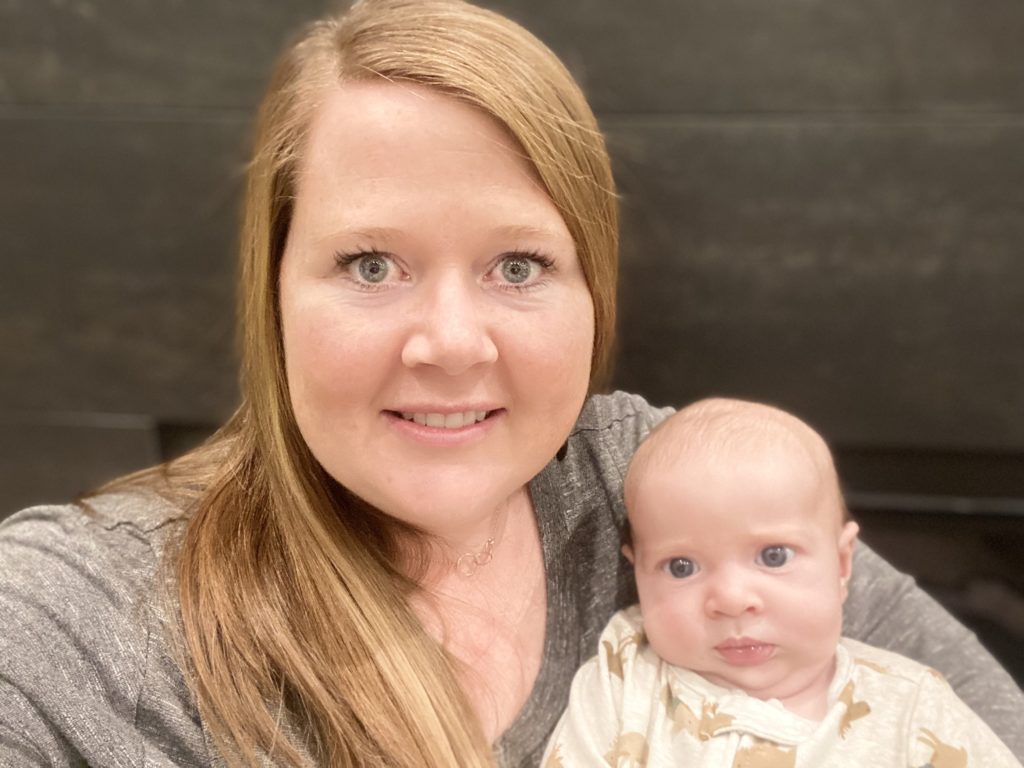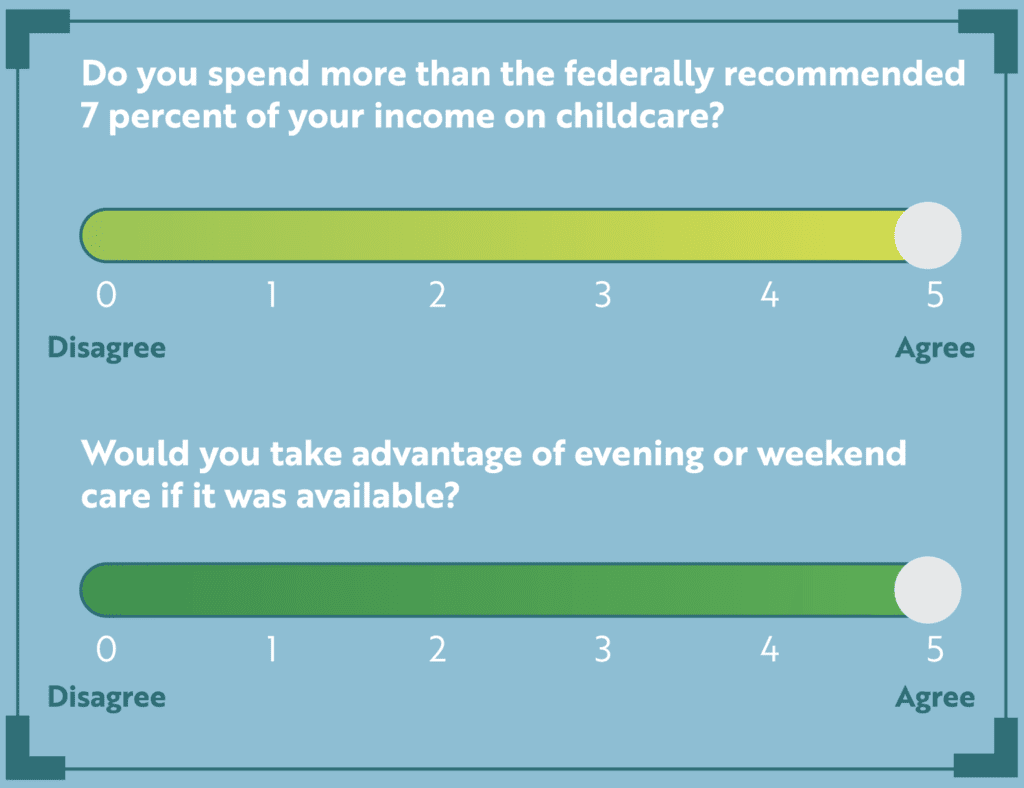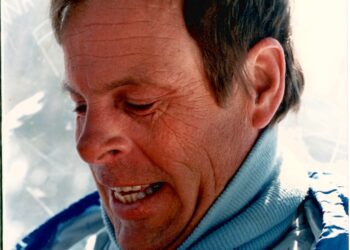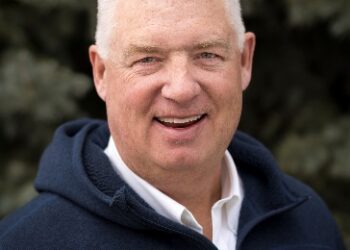Child-care shortage in Big Sky prompts groups to seek federal funding
By Gabrielle Gasser EBS STAFF
BIG SKY – On a wintry Wednesday afternoon the entire Adams family, 3-year-old Carson, 3-week-old Parker, mother LeAnn, and father Steve, are home together. Carson and his dad just got off the ski hill, quality time made possible by Steve’s adjusted work schedule, but the young boy still has energy. He holds up his plastic blocks, eager to play.
The Adamses moved to Big Sky five years ago and both LeAnn and Steve hold full-time jobs here. Though LeAnn is able to work from home and Steve has done his best to adapt his schedule, their family struggles with the same issue plaguing many families with young kids in Big Sky: a lack of affordable child care.
The pickings are slim for child care in Big Sky and families lucky enough to secure a spot pay a premium. New federal dollars, however, could fuel community-wide efforts to support and expand child-care options.
Big Sky Discovery Academy offers an Early Childhood Program five days a week with capacity for 20 kids daily, and Lone Peak Playhouse at Big Sky Resort offers drop-in day care during the winter for up to 50 kids per day. But currently, Morningstar Learning Center is the only full-time, year-round child-care facility in the area.
According to Morningstar Executive Director Mariel Butan, the center currently has capacity for 50 children per day based on staff numbers and state-mandated ratios. Morningstar has received inquiries for more than 30 children in the last year who Morningstar couldn’t enroll, Butan said.
Day rates at Morningstar range from $59 to $70 depending on the age of the child, and if a family enrolled an infant full time, it would cost $16,730 for the year. That’s nearly 76 percent higher than the average annual cost of infant care in Montana at $9,518, according to 2020 data compiled by the Economic Policy Institute.
The Department of Health and Human Services defines affordable child care as costing no more than 7 percent of a family’s income. Families using Morningstar’s infant care five days a week without tuition assistance would need to make $239,000 each year to keep child-care costs at that 7 percent. The median household income in Big Sky is $75,586, says the U.S. Census Bureau.
Most students don’t attend full time though, according to Butan, families using Morningstar’s services pay on average $551 a month per child, placing them well below the state average.
The Adams family uses Morningstar four days a week on average. Since Morningstar offers flexible enrollment, LeAnn can save a little on child care if she keeps her son home on days when she or her husband are off from work.
Sometimes, LeAnn explains, they have to drive five hours round trip to Helena and back in order to gain a couple days of child care by dropping their son off with his grandparents. She says this happens about six times a year when the family is in a bind.
“As of July 1, our tuition for one child went up 32 percent,” LeAnn said. That 32 percent increase is a result of Morningstar’s annual increase in tuition, coupled with a change in the tuition assistance program that took away the flat $13 per day of assistance available to all families.
With the support of the Big Sky Resort Area District and Spanish Peaks Community Foundation, Morningstar implemented a new needs-based tuition assistance program in July 2021 as opposed to one with a set amount per day.
Although the annual tuition increase in 2021 was $2 to each day rate, a smaller-than-planned increase according to Butan, the change in tuition assistance meant that families who don’t qualify for the need-based tuition, like the Adamses, were then paying an additional $15 a day for child care.
To qualify for Morningstar’s tuition assistance, families must submit an application through a third party that assesses a wide variety of information and creates a value called Expected Family Contribution. If that number is less than Morningstar’s annual tuition, which can range from $14,000 to almost $17,000, a family will likely qualify for assistance, Butan said.
Butan recognizes how steep the increase was for some families and that those rates still don’t totally cover Morningstar’s operating costs. “Morningstar is making [our services] the lowest cost possible,” she said, “but that doesn’t necessarily make it affordable for families.”
In total, 32 children currently enrolled have been awarded tuition assistance this year, according to Butan. Morningstar is projected to spend $225,000 in annual tuition assistance, though, she said, this number could increase based on new enrollment over the next six months. The program has already increased average weekly enrollment by a full day per week. The goal? Reduce the cost of care at Morningstar to the recommended 7 percent of a family’s income.
“It’s nice to be able to support the families who need it so that they can still live and work here and have their kids get a great early learning experience,” Butan said.

LeAnn, who recently gave birth to her second son, Parker, worries about finding child care for him until he is six months old and can enter Morningstar. She said the family is currently searching for a nanny.
“The most important thing to remember, and I know Morningstar takes a lot of heat for this, is this isn’t a Morningstar problem,” LeAnn said. “They offer what they can, they are a business just like everyone else … It needs to be a communitywide initiative.”
A community mobilized
To help alleviate the pressure, Morningstar applied for a Child Care Stabilization Grant made available through the American Rescue Plan Act and a local Child Care Task Force is also looking to an ARPA grant for aid.
Morningstar submitted its grant application in October for funds specifically made available to licensed and registered child-care providers. Funds can be used for a variety of operating expenses including personnel costs and health and safety training. Butan expects to hear back on grant awards by mid-January.
If Morningstar receives the funds, Butan said, they would primarily be used to cover the facility’s operating deficit which, without any grants, fundraising or philanthropic support, is $400,000 annually. The grant money could also be used for other longer-term projects including employee housing to retain staff and a new building on a lot owned by Morningstar to provide kids with an even better learning environment.
In November of 2021, the Big Sky Chamber of Commerce gathered a coalition of Big Sky organizations to take a holistic look at child-care issues in the area and pursue solutions.
The Child Care Task Force includes representatives from the Big Sky School District, Discovery Academy; Morningstar; Spanish Peaks Community Foundation; Moonlight Community Foundation; BSRAD; Yellowstone Club Community Foundation; Big Sky Community Organization, Big Sky Chamber of Commerce; private employers as well as Montana House District 64 representative Dr. Jane Gillette.
The meetings thus far have examined the issue of child-care access and affordability throughout Gallatin County, Gillette told EBS, and many of the solutions would be implemented in her district, which includes Gallatin Gateway, Four Corners, Big Sky and West Yellowstone.
“At some point, it just becomes a real basic math equation of how much are you going to earn [and] how much does your child-care cost,” Gillette said.

The Child Care Task Force is currently focused on applying for an Innovation and Startup ARPA grant. The application for this grant is not open yet but Hannah Richardson, community engagement director with the Spanish Peaks Community Foundation, said the task force is planning to apply in January when they anticipate applications will open.
Gillette described it as a planning grant that would provide the funding to start a new child-care business, and said a subsequent grant could help fund the business conceived of through the planning grant.
“Part of our goal with this grant is to really be the broker, make the connection, connect with child-care providers and really get them the financial support that is already available,” Richardson said.
A small subset of the main committee, including Gillette, Richardson and Caitlin Quisenberry, vice president of operations and events with the Big Sky Chamber, is tasked with applying for the ARPA funds. The subcommittee has also met with a Gallatin Child Care Discussion Group which includes the Northern Rocky Economic Development District and nonprofits Child Care Connections and the Human Resources Development Council to discuss and develop different operational models.
Richardson says the partnerships being formed to find solutions to this pressing issue are strengthening the Big Sky community.
“Things can’t happen overnight but there are a lot of people that actively are working to find better solutions to support the working class and I find that really hopeful and empowering,” she said.
Richardson said the Child Care Task Force is also considering how ARPA funds could benefit the commuting workforce as well as Big Sky. The discussions between Gillette, Richardson and Quisenberry along with local child-care providers have yielded the idea for a potential child-care facility in Gallatin Gateway. Richardson said such a resource could help serve the commuting workforce and open more local spots to Big Sky kids.
“I think for Big Sky it’s not going to be one size fits all,” said Gillette, adding that a variety of options will be needed to serve all members of the Big Sky community.
The rest of Big Sky is getting creative as well.
BSSD’s school board recently approved a first reading of a measure that, if passed at the next meeting, would create a pre-K program. And as the new BASE community center reaches completion, plans are being made for activities and programs that will serve younger children in the Big Sky community.
Big Sky’s status as a resort town, despite its many challenges, Butan says, gives it a unique opportunity to be nimble and try some outside-the-box solutions.
“I personally am very excited to see where this Child Care Task Force goes,” she said, “because there are a lot of great ideas out there that I think we have the ability to try and not restrict ourselves.”














